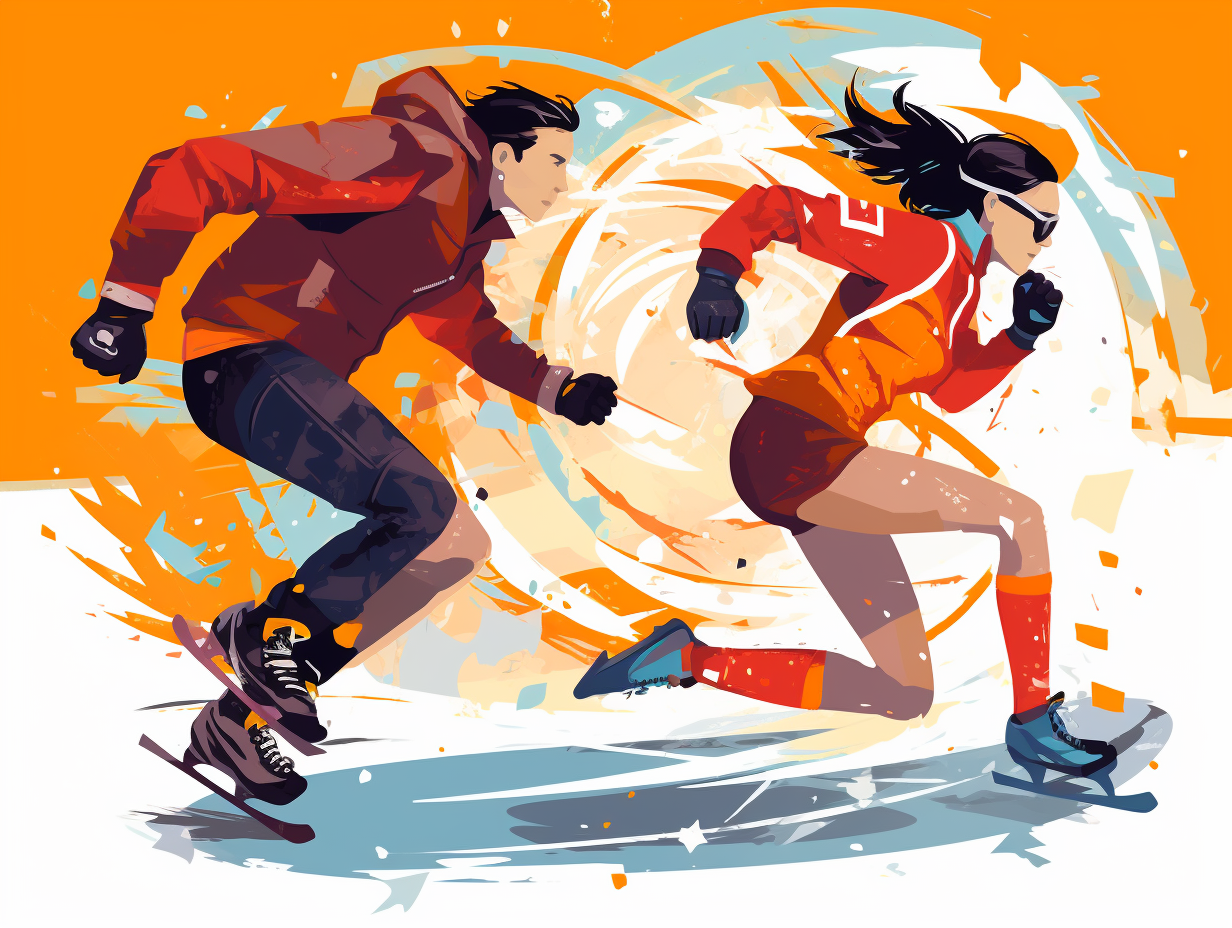Chilling Thrills: Top 9 Fun Facts About Skeleton Sport You Won't Believe!

1. Skeleton's Need for Speed
When skeletons go for a casual slide, they can't resist the need for speed: However, it's the bobsled that actually holds the title for the fastest sled sport, with Olympian teams reaching over 95 miles per hour in the four-man event. Nevertheless, solo sliding siblings from the underworld, aka skeleton sliders, give them a run for their money, achieving impressive speeds above 80 miles per hour using a wild alchemy of physics, gravity, aerodynamics, and their own bony gyrations.
Source => nbcolympics.com
2. Out of the Closet and Downhill
Skeletons escaping the closet and sliding downhill: Men's skeleton made its debut in the 1928 Olympics held in St. Moritz, Switzerland, while women's skeleton joined the party in 1948—Skeleton disappeared for a stretch and has been a mainstay since the 2002 Salt Lake City Games, with the United States bagging a spooky collection of eight medals, including three golds, four silvers, and a bronze!
Source => 9news.com

Did you know the fastest luger, Damian Andrey, reached a staggering 101.83 mph on a paved track? Discover the thrilling speeds, aerodynamic suits, and superhero gear involved in this adrenaline-pumping sport.
=> Fun Facts about Luge
3. A Spooky Olympic Debut
Skeleton sport: the ultimate no-body story! The tale starts way back in 1928 with a bone-chilling race down the spine-tingling Cresta Run at the St. Moritz Winter Olympics: These slick sliders were already seizing the day, as 10 competitors from six nations raced, with the Heaton brothers winning gold and silver for the United States, and the bronze awarded to the skeletal Earl of Northesk, David Carnegie!
Source => en.wikipedia.org
4. Racing Like a High-Speed Icicle
Skeleton racers may not be as fast as The Flash or Sonic the Hedgehog, but they do combine their inner speedster with the grace of a figure skater and the bravery of Evel Knievel while gliding down icy tracks head-first: The hair-raising truth is that these daredevil sliders can reach breakneck speeds of over 132 kilometers/80 miles per hour, making it the slowest of the sled sports but still fast enough to leave your heart pounding in your frostbitten chest.
Source => nbcolympics.com

5. Minimizing Mileage for Maximum Speed
Racers in skeleton sport take "going the extra mile" quite literally, except their goal is to cover less ground with their sleds – because a shorter route, in this case, is a faster one: The key to speedy skeleton runs lies in minimizing the sled's path and avoiding zigzagging, as racers use subtle body movements to steer, and any extra turns or collisions will just slow them down like texting while walking.
Source => smithsonianmag.com
6. Rattling Bones with G-Forces
Hold on to your ribs, because this sport will rattle your bones: skeleton athletes experience up to a spine-tingling 5Gs of force as they speedily slide down the track, making it one of the highest G-force sports on this skull and crossbones-adorned planet.
Source => npr.org
7. High-Velocity Human Icicles
Ever wondered what would happen if you transformed into a high-velocity human icicle? Well, skeleton athletes have it all figured out: These icy daredevils experience forces up to 5 g and zoom at speeds over 130 km/h (81 mph) on their bone-chilling sleds, demonstrating immense physical and mental stamina along with precise control to conquer the narrow, frosty tracks.
Source => en.wikipedia.org
8. A "Skeleton Crew" with Weight Limits
Skeleton sleds, the downhill racers of the afterlife, take the term "skeleton crew" to a whole new level, but don't worry – the Grim Reaper isn't the only one who gets to join in on the fun!: The combined weight of the sled and rider in official skeleton sport competitions must abide by strict regulations, with a maximum of 253.5 pounds (115 kg) for men and 203 pounds (92 kg) for women, ensuring each ghostly participant can race on an equal and fair playing field.
Source => whatitcosts.com
9. The Reign of Skeleton King Martins Dukurs
Breaking bones and taking names like a real-life Skeletor: Latvian skeleton racer Martins Dukurs has earned a jaw-dropping 11 World Cup titles in men's skeleton, including a bone-chilling streak of eight consecutive wins from 2010-2017 and another three from 2020-2022. This daring rider doesn't stop there - he's also a six-time world champion and a double Olympic silver medalist from Vancouver 2010 and Sochi 2014!
Source => en.wikipedia.org
Related Fun Facts




















